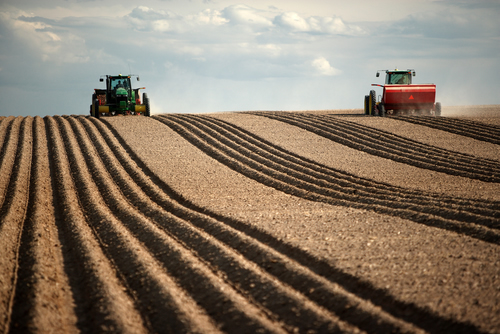
This post is part of the Science Tuesday feature series on the USDA blog. Check back each week as we showcase stories and news from USDA’s rich science and research portfolio.
Over a relatively short time period, innovations in farms’ production practices, risk management, and business arrangements have allowed U.S. farmers to greatly increase their output without raising total input use. These changes accompanied a shift in production to larger farms. Drawing on a variety of data sources, the Economic Research Service recently examined the changes in farming during a 25-year period that ended with the most recent census of agriculture.
We found that the use of two major inputs—land and labor—decreased over time. Between 1982 and 2007, land used in agriculture dropped from 54 to 51 percent of total U.S. land area, while farming used 30 percent less hired labor and 40 percent less operator labor. Yet farmers managed to increase output by nearly 50 percent. The reason: increases in productivity from the adoption of new technologies, more intensive use of manufactured inputs, such as fertilizers, and the efficiencies gained as farm production shifted to larger, more specialized operations.
Farmers also altered how they manage risk, relying heavily on contracting, more complex forms of legal organization, and Federal crop insurance. Contracting assures a market for commodities, and the practice increased roughly 10 percentage points between 1991 and 2007, reaching nearly 40 percent in 2007. Sales from farm partnerships and corporations—generally family owned— grew from 34 percent of all farm product sales in 1982 to 43 percent by 2007, allowing the risks of farm production to be spread over a wider set of stakeholders. Land insured through Federal crop insurance nearly tripled from 100 million acres in 1989 to over 270 million acres by 2007. The increase reflects increased premium subsidies that reduced costs of the insurance for farmers, as well as the introduction of new programs such as revenue insurance.
Since the 1980s, government policies have shifted from concentrating on managing the supply of commodities in order to maintain prices, to focusing on income support, with a growing emphasis on environmental concerns. As larger farms produce the bulk of crops covered by commodity programs, they receive the bulk of commodity program payments. In contrast, most land-retirement payments accrue to smaller farms. Payments from working-land programs—made for conservation efforts on land in production—are increasing in importance and follow the pattern of commodity payments, tending to accrue to larger operations.
A question often asked about farming concerns the survival of the family farm. Despite dramatic changes in the organization of farming, most farms remain family operations, with the majority of the farm business owned by the farm operator and individuals related to the operator. Overall, 98 percent of all farms are family operations—which can be organized as partnerships or family corporations as well as proprietorships—accounting for 82 percent of production.
Read more findings from our report, The Changing Organization of U.S. Farming.
